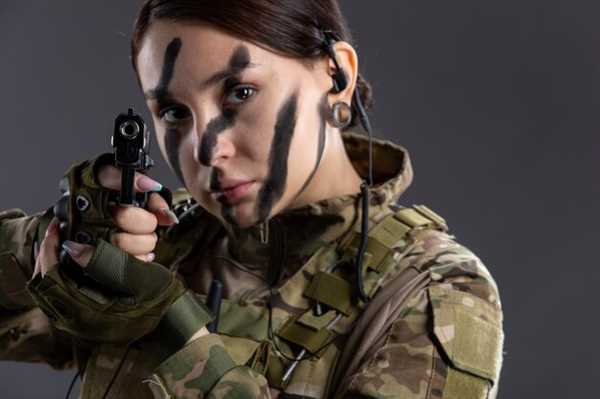

Choosing between advanced night vision and heat detection systems is essential for precision and performance in low-light scenarios. Each technology offers distinct advantages that cater to specific needs and environments. For those engaged in wildlife observation, search and rescue, or tactical operations, understanding these differences is key.
Night vision devices excel in clear conditions, amplifying ambient light to create a detailed image. This capability allows for identification of targets and terrain with remarkable clarity, making them ideal for star-lit nights or situations where subtle light sources are available. They are lightweight and compact, ensuring ease of use during extended operations.
Conversely, thermal imaging relies on the detection of heat signatures, making it invaluable for operations in complete darkness or obscured environments, such as smoke or fog. This versatility allows for the identification of living beings and heat-producing objects regardless of surrounding conditions, ensuring safety and efficiency in various situations.
Ultimately, the choice between these sophisticated devices depends on the specific demands of the task at hand. Users should assess factors such as environmental conditions, intended use, and personal preference to select the most suitable technology for their outdoor endeavors.
Comparative Analysis of Image Quality in AGM NVG and Thermal Scopes
Choose image intensifiers for low-light conditions where fine details and color differentiation are crucial. In environments with minimal ambient light, these devices excel at providing a clear view of the surroundings, enhancing contrast and depth perception in various lighting scenarios.
Conversely, opt for infrared detection systems in total darkness or when visibility is obstructed by smoke or fog. These systems detect heat signatures, producing a vivid display of temperature differences which can be critical for identifying living beings or warm objects against cool backgrounds.
Resolution plays a significant role in clarity. Devices with higher pixel counts deliver sharper visuals. Check specifications to ensure resolution meets your situational needs, as this impacts target identification distances and detail recognition.
Field of view influences situational awareness. A wider perspective allows quicker scanning of the environment, beneficial for tracking movements. However, this can trade off with magnification, limiting distance viewing capabilities.
The refresh rate is pivotal in dynamic environments. A higher rate reduces motion blur, ensuring smoother transitions as you scan across different terrains or while tracking fast-moving objects.
Weather resistance and durability matter too. If anticipating exposure to harsh elements, select units built to withstand extreme conditions without compromising performance.
Finally, factor in weight and ergonomics. Lighter, well-balanced devices enhance comfort during extended use, impacting effectiveness in prolonged operations.
Battery Life and Power Consumption of AGM NVG vs Thermal Scopes

Choose devices based on battery efficiency and usage demands for optimal performance. Power consumption varies significantly between the two types, impacting operational duration and energy management. Consider these factors:
- Battery life of night vision devices typically extends longer than that of heat detection units. Expect usage times ranging from 20 to 40 hours on standard batteries.
- Heat detection instruments generally operate on higher power, with typical runtimes between 4 to 12 hours, depending on settings and ambient conditions.
- Opt for models equipped with energy-saving features, such as auto-power off or adjustable brightness levels, to prolong battery lifespan.
- Rechargeable options can provide substantial savings and convenience, significantly reducing operational interruptions.
Battery type plays a critical role:
- Alkaline batteries are common in night vision tools, offering reliable performance and extensive availability.
- Lithium batteries, prevalent in thermal imaging units, deliver superior energy density, ideal for extended field use.
Monitor power levels to avoid unexpected shutdowns. Consider carrying spare batteries for heat-sensing gear due to its higher drain. Tailor your choice to the anticipated duration of use and environmental factors for the best outcome.
Field Performance: Pros and Cons of AGM NVG and Thermal Scopes in Various Environments

For nighttime operations, night vision devices excel in low-light situations, providing clear visibility under starlight or moonlight. They amplify existing light, making them suitable for observing movement in shadows. However, their performance degrades in complete darkness or bright light conditions. Fog, rain, or dust can also hinder clarity, leading to limitations in diverse weather.
Conversely, thermal imaging units detect heat signatures, allowing users to see through total darkness, smoke, and light fog. They excel in detecting warm bodies or equipment, offering a significant advantage in search and rescue operations or tactical scenarios. Yet, in extremely hot environments, the effectiveness diminishes, as heated surroundings reduce contrast, making targets less distinguishable.
Considering terrain, the former type performs well in forests or urban areas where ambient light exists. Nevertheless, highly reflective surfaces might cause glare and impede visibility. The latter type, while proficient in open spaces and challenging weather conditions, may struggle in complex landscapes where the heat signatures of multiple objects could create confusion.
Battery life varies between these technologies. Night vision devices often consume less power, offering prolonged usage in extended missions. In contrast, thermal units tend to deplete batteries more quickly, requiring users to carry spares for extended operations.
Choose night vision for environments with some ambient light or when stealth is paramount. Opt for thermal equipment in complete darkness or adverse weather, where heat detection becomes crucial. Prioritize mission requirements to select the most suitable option based on environmental conditions. Consider factors like range, battery life, and the specific scenarios to maximize effectiveness.




